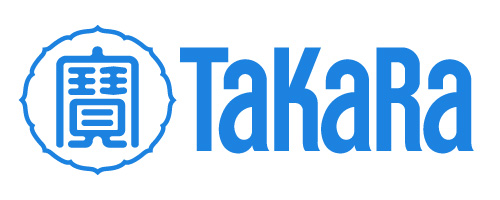Genome Editing (GERG)Mission
Questions or interest in joining an ABRF research group? Contact us!
Current MembershipJenn Page (Chair) - University of California, San Francisco
Dear ABRF community, Genome Editing Research Group (GERG) is pleased to invite interested researchers to participate in its research study. The GERG study: Generating cell lines containing specific point mutations using CRISPR-Cas9 is a frequent request for genome engineering core facilities. In this study, we set out to compare the efficiency of point mutation generation using CRISPR with Cas9, Cas12a/Cpf1, and prime editing. This will be a multi-center study to evaluate the application of these newer tools for routine use at core facility laboratories to develop genome-edited cell lines. Current status of the project: The experimental plan is completely designed, and the necessary reagents are procured. The experiments are being initiated at 5 independent laboratories. What are we seeking from you? We hope to conduct this study at a greater number of laboratories, preferably up to 10. A larger number of participants and experiments will help evaluate the systems more robustly. Participation details: We will provide the details of the cell culture experiments involving transfection, including all the necessary reagents and protocols. As a participant laboratory, you will do the cell culture experiments, collect samples, and ship them to a central laboratory for analysis. The central laboratory will perform the downstream experiments (such as NGS and other methods), and the data will be analyzed. Benefits of participating in the study: We intend to publish the results, preferably in a peer-reviewed open-access journal. Researcher/s from the participating laboratories will have a chance to be included as authors in the article. To get started or if you need more information: Contact [email protected] We look forward to your participation! Best Regards, GERG ------------------------ GERG 2019 Study Recent advances in genome engineering are allowing scientists to better understand biology by precisely deleting, editing, or tagging genomic DNA. The clustered regularly interspaced palindromic repeats (CRISPR)/CRISPR-associated (Cas) system was first used to edit mammalian cells in 2013 and has grown in popularity ever since. Multiple guideRNA and Cas9 reagent formats can be used for editing cells. In this study, we compared three popular methods: 1. a plasmid expressing both the guideRNA and Cas9, 2. Cas9 protein combined with a synthetic single guideRNA, and 3. Cas9 combined with a 2-part guideRNA. In addition, the CRISPR/Cas system can be delivered to cells via lipofection or nucleofection transfection methods. This study aims to compare the efficiency of gene editing outcomes at 3 different genomic targets, 3 unique guideRNA reagent formats, and 2 delivery method across multiple labs. For the 2018 GERG study, the group performed a pilot study and found that the results varied considerably across the 4 sites. Three possible sources of the variation are: 1. researchers had different levels of experience with the different methods 2. the provided protocols (from the companies) were challenging to understand, and 3. each researcher only performed one replicate. In 2019, we wrote a standard protocol and repeated the experiments multiple times to more accurately evaluate the reproducibility of these methods. Determining which CRISPR reagent format is the most reproducible and has the highest gene editing outcomes will be beneficial for core facilities or research labs getting started with genome editing. Results were presented in a poster at ABRF 2020: GERG Study 2019-2020: Reproducibility of indel formation rates by comparing guideRNA format and delivery method
GERG 2018 Reproducibility Study In 2018, GERG initiated a study to evaluate the reproducibility of indel formation rates by comparing guideRNA format and cell delivery methods across multiple labs. Various configurations of guideRNA and Cas9 components can be used for editing cells. A few options include: a plasmid expressing both the guideRNA and Cas9, Cas9 protein combined with a synthetic single guideRNA, and Cas9 combined with a synthetic 2-part guideRNA. In addition, delivering these components to cells can be done using lipofection or nucleofection transfection methods. In the GERG 2017 survey (CRISPR/Cas9 Methods: Preferences from the Field), plasmid format and lipofection delivery were favored among cell culture users. Meanwhile, RNP format for the guideRNA and Cas9 is gaining in popularity in combination with nucleofection delivery. This study aims to evaluate cutting efficiency at 3 different guideRNA targets based on the guideRNA format and delivery method across multiple labs. Determining which method or format is the most reproducible will be beneficial. Core facilities or research labs getting started with genome editing could use these results as a benchmark for optimizing their own protocols. Results were presented in a presentation at ABRF 2019: Reproducibility of indel formation rates by comparing guideRNA format and delivery method Results were also presented in a poster at ABRF 2019: Reproducibility of indel formation rates by comparing guideRNA format and delivery method GERG Survey 2017 The Genome Editing Research Group surveyed users of the CRISPR/Cas9 technology to help establish an understanding of preferred methods being used. As new core facilities are being formed to support the CRISPR/Cas9 technology, or existing cores have adapted their services to fit the technology into their workflows, considering what other cores are using is important. Questions regarding preferred guideRNA design tools, format of reagents, mutation analysis methods, and other relevant topics were included. The collected data can be viewed here: https://www.surveymonkey.com/results/SM-ZBM5L6768/ Results were summarized in a poster and presented at ABRF 2018: CRISPR/Cas9 Methods: Preferences from the Field Membership History
Questions or interest in joining an ABRF research group? Contact us! |












